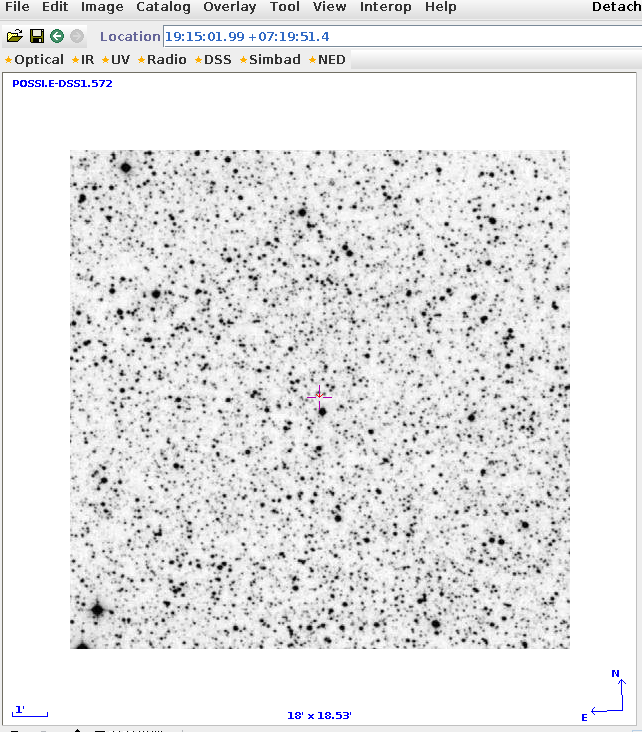
On the night of June 13/14, 2013, I observed the the cataclysmic variable star PNV 19150199+0719471. The weather wasn't very good, but I did manage to acquire about 1.5 periods of data.
The main setup was:
Notes from the night
The cataclysmic variable star known as PNV 19150199+0719471 is now in outburst. Look at the web page for Jun 04 UT for information about it.
Here's a chart from the Digitized Sky Survey. The star labelled "B" is a known variable star, probably an eclipsing binary: see Bernhard and Lloyd, IBVS 4920, 1 (2000) .

I took a set of 20-second guided exposures. I discarded some of the images, leaving 219 good ones.
Below is one of my images from an earlier night.
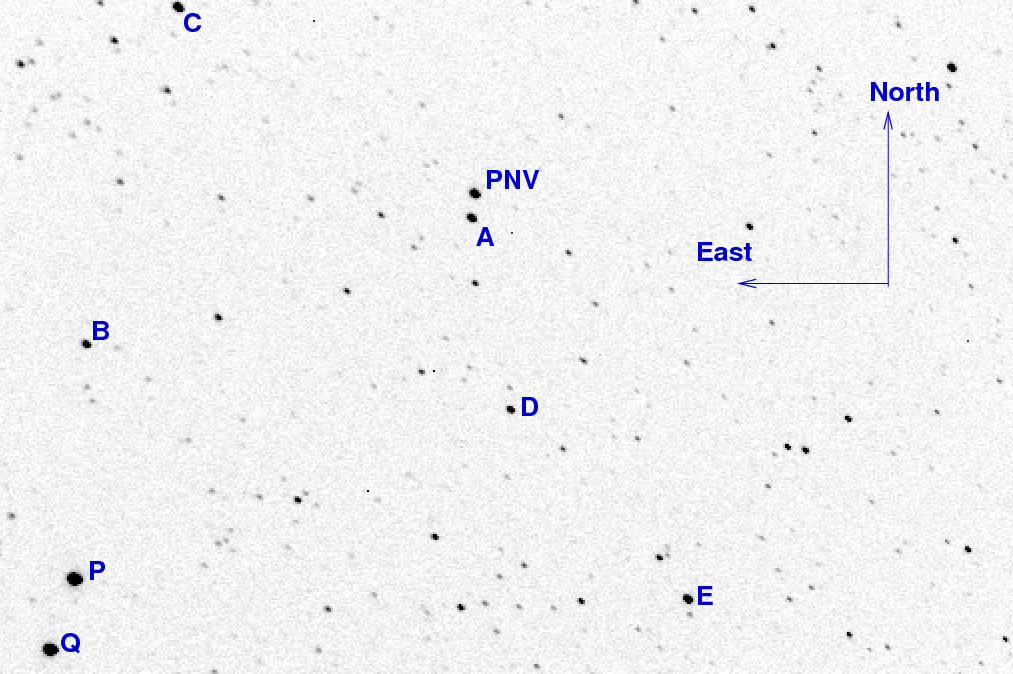
Using aperture photometry with a radius of 4 pixels (radius of 7.4 arcsec), I measured the instrumental magnitudes of a number of reference stars and the target. Following the procedures outlined by Kent Honeycutt's article on inhomogeneous ensemble photometry, I used all stars available in each image to define a reference frame, and measured each star against this frame. I used the UCAC4 V-band magnitude for star "E" to convert the ensemble instrumental magnitudes to the standard V-band scale. Do note that my measurements were made without a filter, but I am shifting them to match (roughly) the V scale.
The graph below shows the change in zeropoint from image to image. Clearly, the clouds came and went throughout the run.
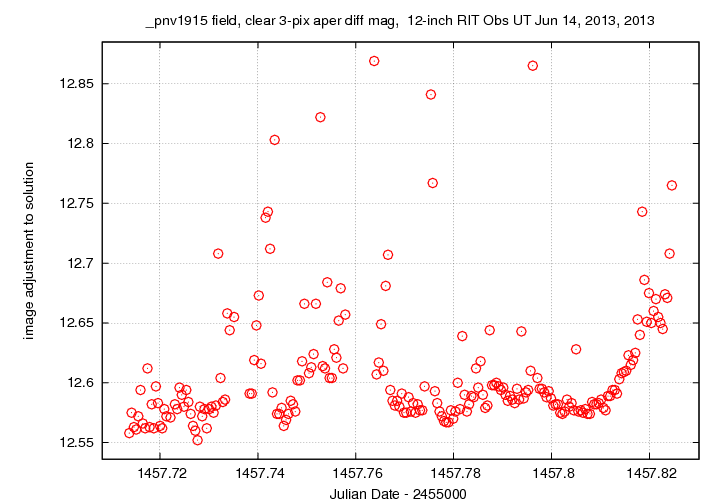
The scatter as a function of instrumental magnitude shows that the brightest unsaturated stars had a scatter of about 0.007 mag. The target, at instrumental magnitude 1.0, has a slightly elevated scatter of 0.034 mag. Note that star "B" at mag = 1.3 has a very elevated scatter, due to its own variations.
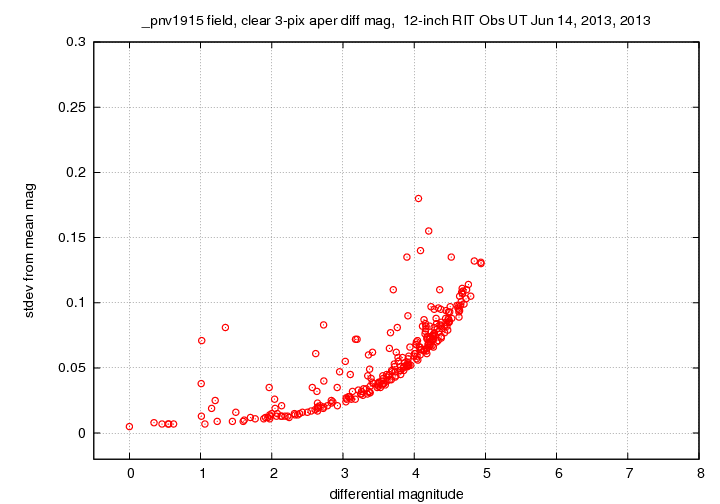
Here are light curves of the target star (green crosses) and some of the other stars in the field. The star "D", shown by cyan squares, has a number of outliers due to confusion with a slightly fainter star about 12 arcsec to its north-east. I've shifted the measurements of "D" fainter by 0.3 magnitudes for clarity.
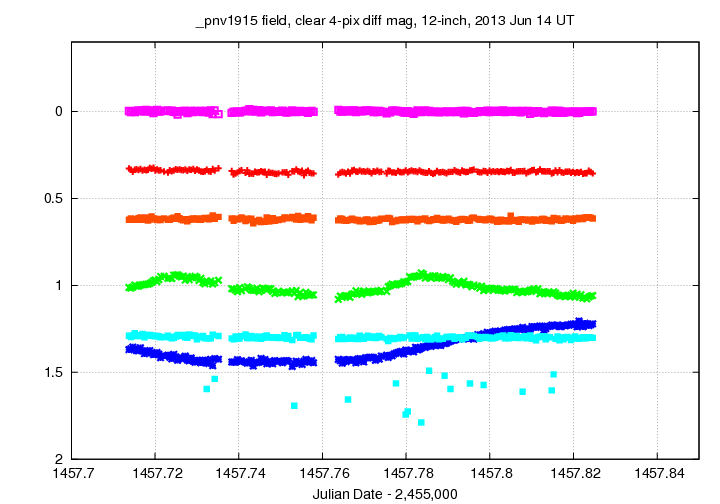
Here's a closeup of the target (green crosses) and a few other stars. I've shifted the measurements of "D" fainter by 0.3 magnitudes for clarity.
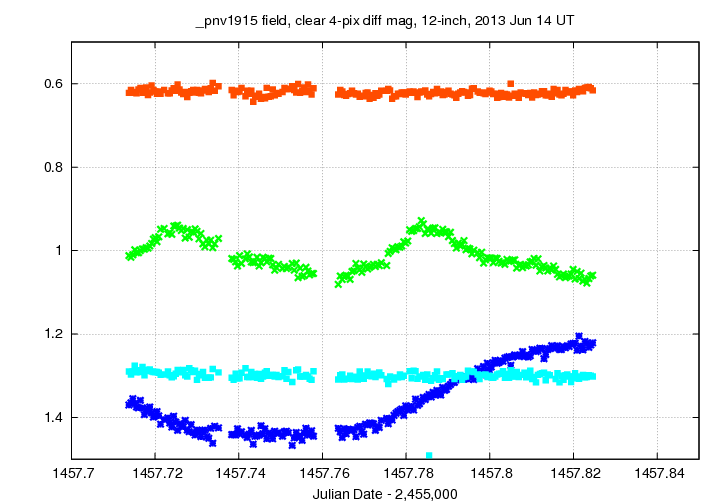
The amplitude of variations in PNV1915 is larger now than it was last week; peak-to-peak change is 0.14 mag or so.
I sent a message to cba-data with the following report. This shows only the first few lines of measurements -- the full set can be retrieved using the link below.
# Measurements of PNV19150199+0719471 made at RIT Obs, Jun 14, 2013 UT, # in mediocre conditions, # by Michael Richmond, using 12-inch Meade and SBIG ST-8E CCD. # Exposures 20 seconds long, no filter. # Tabulated times are midexposure (FITS header time - half exposure length) # and accurate only to +/- 1 second (??). # 'mag' is a differential magnitude based on ensemble photometry # using a circular aperture of radius 7.4 arcseconds. # which has been shifted so UCAC4 487-093884 has mag=11.486 # which is its V-band magnitude according to UCAC4. # # UT_day JD HJD mag uncert Jun14.21374 2456457.71374 2456457.71824 11.877 0.013 Jun14.21421 2456457.71421 2456457.71871 11.881 0.013 Jun14.21468 2456457.71468 2456457.71918 11.875 0.013
Last modified 06/05/2013 by MWR.